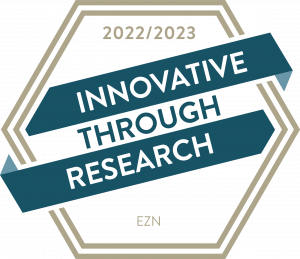System for the Manipulation of Cells
Abstract
This technology allows a cell manipulation system that is easy to manufacture, and the manipulation yields more reproducible results. A conventional method for cell permeabilization is known as "optoinjection". The membrane of a biological cell may transiently be permeabilized by tightly focusing the pulse of a nanosecond laser onto the cell membrane. Through the resulting hole in the cell membrane, macromolecules such as DNA or RNA strands from the ambience may be introduced into the cell, for example in order to increase or suppress the production of the green fluorescent protein in the cell. The inventive method is characterized by the formation of surface structures with a size of one micrometer or less on the surface of the substrate prior to depositing a metal thereon. The metal deposition may be performed by any suitable method. The shape and dimension of the formed metal nanoclusters can be easily controlled and adjusted.background
A conventional method for cell permeabilization is known as “optoinjection”. The membrane of a biological cell may transiently be permeabilized by tightly focusing the pulse of a nanosecond laser onto the cell membrane. Through the resulting hole in the cell membrane, macromolecules such as DNA or RNA strands from the ambience may be introduced into the cell, for example in order to increase or suppress the production of the green fluorescent protein in the cell.
This optoinjection technique has several disadvantages. First, it is very slow, as it allows the manipulation of a single cell at any given time only. Another disadvantage is the high mortality of the cells treated by the optoinjection technique, due to the high stress exerted on the cells.
A conventional tool for the manipulation of cells is a microcapillary or a substrate bearing a plurality of metal nanoparticles. When the tool is subsequently irradiated with an intense nanosecond laser pulse, the nanoparticles absorb the laser radiation and rapidly heat up by several hundred degrees. This superheating leads to the generation of cavitation bubbles which may locally destroy the membrane of a cell in the vicinity of the nanoparticles. But, the formation of cavitation bubbles is a random process which is not entirely predictable.
Depending on their size, the cavitation bubbles will put the biological objects in their vicinity under considerable mechanical stress, which may often lead to cell death.
Innovation / Solution
When irradiating the surface of the substrate with laser pulses, the membranes of a cell at the surface of the substrate can be locally perforated or permeabilized, thereby allowing the introduction of macromolecules or other substances from the ambiance of the cell into its interior. This distance could be less than a micrometer. The cells manipulated by the method according to the invention exhibit a high survival rate, as well as a high responsiveness to the manipulation.Benefits
fields of application
This technology allows a cell manipulation system that is easy to manufacture, and the manipulation yields more reproducible results.You can close this window. You can find your search results in the previous window



